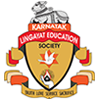| 1 |
Mathematics |
- Evaluate Group, Ring and Fields and 2D Geometry.
- Familiarity with Determinant and Matrices.
- Formulate Limit, Continuity and Differentiability.
- Demonstrate a working knowledge Definite and Indefinite Integrals.
|
| 2 |
Computer
Organization and
Architecture |
- Ability to understand the functions of various hardware components and their building blocks .
- Ability to understand and appreciate Boolean algebraic expressions to digital design.
- Understanding of sequential and Combinational circuits Understanding of realization of different combinational/sequential circuits
- Understanding of different stages of an instruction execution.
- Understanding of how different hardware components are related and work in coordination.
- Ability to understand computer buses and input/output peripherals.
|
| 3 |
Programming |
- Design, develop and test windows based and web based programs.
- Implement and innovate commands using the basic tool kit in UNIX.
- Understanding of the principles and practice of object oriented analysis and design in the construction of
robust, maintainable programs which satisfy their requirements.
- Ability to implement, compile, test and run Java, C++ programs comprising more than one class, to address a particular software problem.
- Design, create, build, and debug Visual Basic applications.
- Explore Visual Basic‘s Integrated Development Environment (IDE).
- Write and apply procedures, sub-procedures, and functions to create manageable code.
- Understand the basic working of Internet and its main services.
- Acquire knowledge about the facilities for secure communication
- Understand, analyze and build interactive web applications.
- Understand, analyze and build dynamic web pages using JavaScript and VBScript (client side programming).
- Understand, analyze and create XML documents and XML Schema
- Understand the programming constructs, compile, test and run C programs.
- Turbo C IDE is used as platform for running C programs
- Create programs using Python IDLE
- Learn the program constructs, interpreter and run Python programs.
- Implement OOPs concepts, usage of graphics, and implement error handling in programs. work with user inputs to create fun and interactive programs
|
| 4 |
Operating Systems |
- Analyze the concepts of processes in operating system and illustration of the scheduling of processor for a given problem instance.
- Identify the dead lock situation and provide appropriate solution so that protection and security of the operating system is also maintained.
- Analyze memory management techniques, concepts of virtual memory and disk scheduling.
- Understand the implementation of file systems and directories along with the interfacing of IO devices with the operating system.
|
| 5 |
Data Structures |
- Analyze data structure impact on algorithms, program design and program performance.
- Understand the concepts of binary search trees, heaps, and disjoint sets.
- Explain & describe the applications of static and dynamic trees.
- Design, implement, and use advanced ADTs.
|
| 6 |
Computer Networks |
- To explain how communication works in computer networks and to understand the basic terminology of computer networks .
- To explain the role of protocols in networking and to analyze the services and features of the various layers in the protocol stack.
- To understand design issues in Network Security and to understand security threats, security services and mechanisms to counter.
|
| 7 |
Software Engineering |
- Extract and analyze software requirements specifications for different projects.
- Develop some basic level of software architecture/design.
- Apply standard coding practices.
- Define the basic concepts and importance of Software project management concepts like cost estimation, scheduling and reviewing the progress.
- Identify and implement the software metrics.
- Apply different testing and debugging techniques and analyzing their effectiveness.
|
| 8 |
Data Base Management System |
- Able to construct an Entity-Relationship (E-R) model from specifications and to transform to relational model. Able to construct unary/binary/set/aggregate queries in Relational Algebra.
- Understand and apply database normalization principles.
- Able to construct SQL queries to perform CRUD operations on database. (Create, Retrieve, Update, Delete)
- Understand principles of database transaction management, database recovery, security.
|
| 9 |
Artificial Intelligence |
- Understanding of the concept of AI.
- Identifying the application areas of artificial intelligence in real life. Apply AI techniques to real-world problems to develop intelligent systems.
- understand the different artificial intelligence concepts in multidisciplinary domains considering social needs.
|
| 10 |
Analysis and Design of Algorithms |
- Analyze the performance of algorithms using time and space complexity.
- Describe the divide and conquer, greedy, dynamic, backtracking paradigm and explain how the problems can be solved and analyze the complexity of algorithms.
- understand the basic traversal and searching techniques (BFS, DFS).
|
